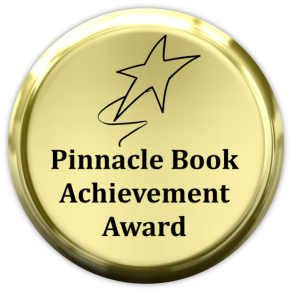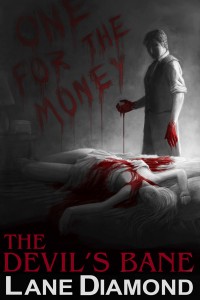THIS POST IS FOR WRITERS:
“Let your characters sail through dialogue. Don’t weigh them down with awkward anchors.”
The subject of dialogue tags has occupied a large swath of my Editor’s Radar lately. If you’ve studied the art and craft of writing at all, you know how important dialogue it is to us as both readers and writers—an engaging way to advance character, conflict, setting and plot. Nothing brings characters to life—makes them breathing, feeling, thinking beings—quite like dialogue. It generates realistic character interaction and builds their relationships, and provides readers a greater understanding of what truly makes the characters tick.
Dialogue is intimate. In a sense, it makes us more than just readers; it makes us eavesdroppers. Many readers give up on stories that don’t utilize dialogue both quickly and effectively. Some magazine editors feel the same way about submissions to their publications. For example, I’ve seen short story submission guidelines that state—flat out—that stories must include dialogue within the first 150 words for the editor even to consider them for publication. I think that’s a bit melodramatic myself, but to each his own. The editor can do what he wants with his magazine.
You must often mix action with the dialogue—a good thing. However, do so with straight narrative—action leads and inserts—rather than by throwing anchors (tags) onto the dialogue.
Let Subject rules for paragraph construction aide you in providing crisp dialogue. Once you establish a specific character as the Subject of that paragraph, you can simply go to his/her dialogue, using the previous portion of the paragraph as a dialogue lead. Then you needn’t add awkward tags.
Here are some basic rules to remember when providing character dialogue:
1) Always make clear which character is speaking. If there can be any doubt at all, you must clarify.
2) Use proper nouns (names or titles) only when you must; revert to simple pronouns when you can. It helps if you have one character address another by name, thus eliminating the need for an identifying tag. Just make sure it doesn’t sound forced and awkward; in other words, it must sound natural, precisely what a real live person would say in that circumstance.
3) Once you establish a clear back-and-forth between two characters, cut back on the identifying tags. Readers will be able to keep up without any trouble. Revert to those tags only when the dialogue breaks, or when a new character becomes involved, or it’s been a long stretch since you last identified them by name, such that you must remind the reader of who is speaking.
4) People don’t “smile” words, or “laugh” words, or “pause” words, etc. They “say them with a smile,” or they “laugh and say,” or “he said, and paused.”
5) Dialogue tags murder the pace and flow of a conversation, and often smack of author intrusion. A reader will pick-up on it and, depending on how much the author tries to cram down her throat, may think, “Geez, this guy is really forcing it. Does he think I’m an idiot?”
A) Keep the dialogue crisp. Readers want dialogue that represents conversation—period—quote mark to quote mark. They don’t want dialogue that happens like this or as if that, or as he did this, or while she did that, or with heaps of this. Provide those details in the narrative, and keep the dialogue sharp and fast-paced—in other words, real.
B) Whenever you must say more than “he said,” “Mary said,” “John asked,” etc, utilize action leads or inserts in lieu of tags wherever possible. (See “Bad/Good” examples near the end of the article.) The following are examples of the kinds of simple tags you should use.
1) “I’m heading over to Steve’s place,” Dave said.
2) “I can’t believe Sue actually said that,” Linda said.
3) “Take it easy,” he said. “It’s not that bad.”
4) “We have to follow certain rules,” I said.
6) In accordance with #5 above, avoid nasty, lazy adverbs to the greatest extent possible. Schoolteachers often teach just the opposite, but in this circumstance, their instruction is 180 degrees out of phase with the industry. Convey or imply emotion through the actual words exchanged, through the give-and-take, through well-utilized punctuation, through interruptions or ramblings—in other words, through conversation. This is one of the basic tenants of that high commandment of writing: “Show, don’t tell!” The following are examples of what to avoid.
A) …he said angrily.
B) …she said sadly.
C) …she said lovingly.
D) …he said frustratingly.
7) For human beings, communication is as much physical as it is verbal. Picture the conversations you have; you rely on facial expressions and body language to help you interpret the spoken word.
A) If you wish to provide the reader with that image (“show”), do so before the dialogue, where it will be meaningful.
B) If you want us readers to hear a specific tone of voice, or see a specific expression on the character’s face, or feel the character’s emotion, all as she speaks, you must prepare us for that before she speaks.
C) Don’t overdo it. You must strike a reasonable balance between action and dialogue, and if you choose precisely the right words and punctuation, those that convey mood, attitude and volume, you can often drop the inserts altogether. In other words, let the dialogue do as much of its own heavy lifting as possible.
D) I’ll address this issue in greater detail in a future article: “Dialogue Tags vs. Action Leads/Inserts – Part 2.”
I will illustrate through a series of simple examples I’ve seen in some pieces I’ve edited. As always, I shall keep authors’ names and story titles confidential to protect the not-so-innocent. [Insert chuckle here]
BAD: “What do you expect to happen now?” he asked as he leaned in until their faces nearly touched.
(Note: First, given the author’s use of a question mark, is it truly necessary to add that he asked? This is, in my opinion, one of the most overused and frustrating dialogue tags. Second, the character’s lean-in implies a softer tone of voice, which the reader will better infer [hear] if it precedes the dialogue.)
GOOD: He leaned in until their faces nearly touched. “What do you expect to happen now?”
BAD: “I knew you’d come back,” she said as she rose from the chair.
(Note: The author can tighten this up and improve the flow without losing any impact and, in doing so, cut the ever-critical word count by three.)
GOOD: She rose from the chair. “I knew you’d come back.”
BAD: “Yes. We fought,” she said, and she looked at the front of her gown. “He…he… He stabbed me,” she yelled. “I heard someone say I was dying,” she sighed, and she placed a warm hand on my arm. “Did I?”
(Note: First, let paragraph POV rules work to your advantage. Second, a simple exclamation point can replace the unnecessary she yelled. Third, action inserts are smoother and less awkward than tags, and people don’t “sigh” words.)
GOOD: “Yes, we fought. He…he…” She looked at the front of her gown. “He stabbed me!” She placed a warm hand on my arm. “I heard someone say I was dying. Did I?”
BAD: “John!” Fred shouted.
(Set-Up: As the author indicated in a previous paragraph, Fred needs John to help his pregnant woman, who is going into labor. Note: First, the exclamation point works here, such that the author needn’t go on to tell us that Fred shouted; it’s redundant. Second, this is a moment that begs for emotion, yet the author gives us none.)
GOOD: Fred clenched his jaw beneath wide eyes. His back stiffened, and he had to swallow the lump in his throat before he could breathe again. “John!”
In closing, let me remind you that we humans are gregarious creatures; we interact and speak with one another. As readers, we expect the same of your characters, or those characters may not seem real to us. You might get away without dialogue in a short—very short—story, but it will always be difficult to satisfy certain readers if you omit dialogue from large segments of your story.
When you utilize that ever-critical dialogue, resist the urge to anchor it with a bunch of awkward, unruly tags. Provide action leads and inserts wherever necessary, and choose words and punctuation for the actual dialogue (the conversation) that provide as much of the necessary details—emotion, volume, etc.—as possible.
‘Til next time, remember this: Writing well is not easy. It takes work. You mustn’t be lazy.










Please follow me here: